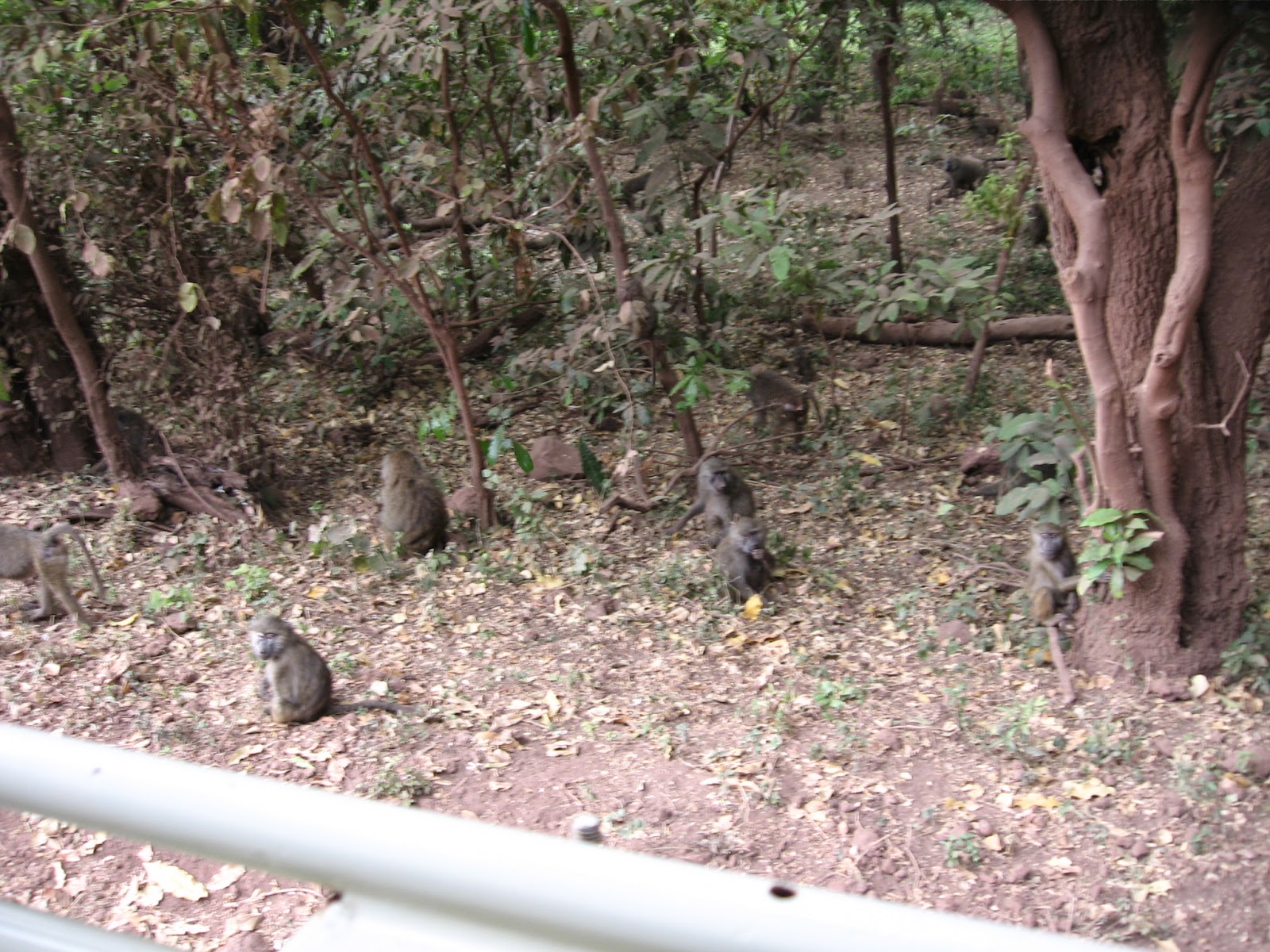This corner of northern Tanzania is dominated by one thing – the
mountain of Kilimanjaro.
I only saw it briefly as I was travelling from the Kenyan border down to the town of Arusha. It was visible for only five minutes before other mountains blocked it out. This part of Tanzania is full of ex-volcanoes and free-standing mountains. But Kilimanjaro is rather special. As well as featuring in Ernest Hemingway’s famous book it exemplifies Africa. Who hasn’t seen pictures of the great snow flecked cone dominate the scene with giraffe or herds of elephant in the foreground?
For this is safari country par excellence. Within easy reach of the Kenyan border are the national parks of Lake Manyara, Tarangire, the famous Ngorongoro Crater and the endless Serengeti plains. The wildlife migrates across this area depending on the season and not paying attention to national barriers. During August/September the vast wildebeest herds numbering into millions are up in Kenya’s Masai Mara. Then during the rest of the year they slowly migrate south until they reach the grassy plains of the Serengeti in January where they give birth.
It is the wildlife that is the main attraction. The tourist town of Arusha depends on the tourist trade. 400,000 visitors a year pass through and for a town stuck out in the acacia desert in this is big business. Over 40 safari operators make this town their base and the road west to the parks is busy in the morning with travellers making their way to the attractions.
I only saw it briefly as I was travelling from the Kenyan border down to the town of Arusha. It was visible for only five minutes before other mountains blocked it out. This part of Tanzania is full of ex-volcanoes and free-standing mountains. But Kilimanjaro is rather special. As well as featuring in Ernest Hemingway’s famous book it exemplifies Africa. Who hasn’t seen pictures of the great snow flecked cone dominate the scene with giraffe or herds of elephant in the foreground?
For this is safari country par excellence. Within easy reach of the Kenyan border are the national parks of Lake Manyara, Tarangire, the famous Ngorongoro Crater and the endless Serengeti plains. The wildlife migrates across this area depending on the season and not paying attention to national barriers. During August/September the vast wildebeest herds numbering into millions are up in Kenya’s Masai Mara. Then during the rest of the year they slowly migrate south until they reach the grassy plains of the Serengeti in January where they give birth.
It is the wildlife that is the main attraction. The tourist town of Arusha depends on the tourist trade. 400,000 visitors a year pass through and for a town stuck out in the acacia desert in this is big business. Over 40 safari operators make this town their base and the road west to the parks is busy in the morning with travellers making their way to the attractions.
Arusha sits in the centre of it all – to the north is Kenya and the international gateway of Nairobi, to the south is Tarangire National Park with its herds of elephants, to the west are the big game parks and to the east is Moshi the base for climbing Kilimanjaro.
I was surprised to find how popular climbing "Kili" was particularly with under thirty backpackers. As I approach the big 4-0 the very thought of spending six days up and down the mountain gave me the willies. I spoke with a couple of people who had done it. Climbs are arranged from the town of Moshi about twenty miles east of Arusha. Moshi is in the shadow of Kilimanjaro and is a pleasant little spread out town. Most guesthouses arrange climbs for you. Climbing Kilimanjaro is not cheap – you have to pay for a guide, porter and cook and each one will need a substantial tip at the end. It’s often best to go with a reputable company and even then you won’t get much change out of $1300.
It’s also physically exhausting. My companion for Ngorongoro hobbled for days after he did Kilimanjaro. He said the experience though physically tough was unbelievable and he could never believe the world could be that beautiful as he approached the summit.
The most popular route seems to be the Marungu Route which takes six days to the summit and back. On the way you pass Alpine meadows, lava ridges and ice sheets . A warning also about altitude sickness –as you ascend you will gather half the oxygen needed at sea level and could have blackouts and dizzy spells. Climbing Kilimanjaro is not for the fainthearted.
Kilimanjaro isn’t the only mountain in the area as northern Tanzania has volcanic resonances. The Rift Valley passes through here and hot springs bubble out at Lake Manyara. The Ngorongoro Crater itself was once a vast volcano that fell in on itself and Mount Longidodo is still a dormant volcano. Our guide George said when he was a teenager there was an eruption. Bits of ash floated through the air like snowflakes and animals starved as it covered the grass.
But this journal is really about magical Lake Manyara. The Rift Valley cuts through here and forms an escarpment over a soda lake. Fed by runoff from the escarpment to the lake a groundwater forest was created that has a massive amount of animals.
This journal is really a celebration of Lake Manyara National Park




No comments:
Post a Comment